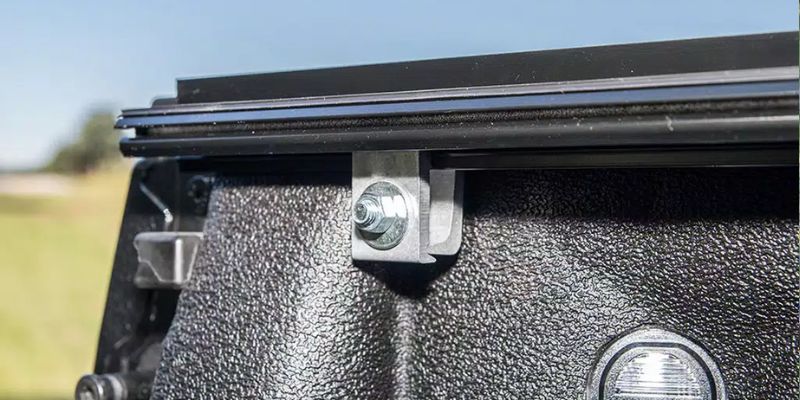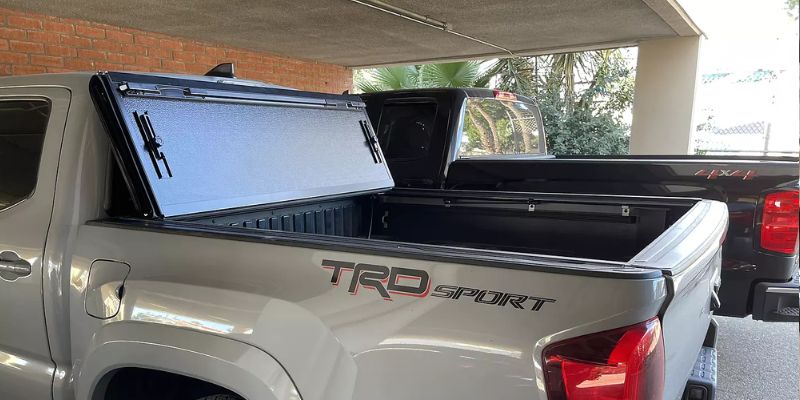Installation complications and operational deficiencies commonly plague the Gator FX tonneau cover system.
Primary concerns manifest through clamp mechanism failures, inconsistent deck rail engagement, and suboptimal waterproofing performance.
Technical analysis indicates that these issues stem from manufacturing tolerances, installation variables, and compatibility constraints with various truck bed configurations.
A systematic examination of these problems reveals patterns that merit further investigation regarding both user experience and engineering solutions.
Common Installation Challenges and Solutions

When installing the Gator FX system, users frequently encounter technical impediments stemming from suboptimal clamp functionality and rail alignment configurations.
The primary issues manifest through improperly seated rails and compromised tonneau cover engagement due to inadequate clamp positioning.
Field diagnostics indicate several remedial procedures that optimize installation efficacy.
Users can execute systematic clamp adjustments by selecting alternative notch positions or implementing strategic shim placement to rectify rail tilt anomalies.
Cold weather conditions necessitate additional consideration during installation, as thermal contraction affects clamp securing mechanics.
For persistent alignment complications, users may explore modified clamp solutions or consult manufacturer specifications for updated installation protocols.
Professional installation services remain a viable alternative when precision requirements exceed DIY capabilities.
Performance Issues During Daily Use
Despite proper installation protocols, Gator FX users encounter several operational deficiencies during routine usage that impact system functionality.
The primary concerns manifest in latching difficulties, with users reporting excessive force requirements to engage securing mechanisms effectively.
System integrity issues present through persistent squeaking and rattling during vehicle operation, particularly when traversing uneven terrain.
These acoustic anomalies indicate potential structural instability in the cover’s mounting framework.
Additionally, water leakage compromises the cover’s weatherproofing capabilities, suggesting inadequate sealing properties.
The observed installation complexity compounds these operational challenges, as less-than-ideal initial setup can exacerbate performance degradation.
The inadequacy of stock clamping mechanisms further contributes to cover instability, necessitating enhanced securing methods to maintain peak functionality during regular vehicle operation.
Deck Rail System Compatibility Concerns

While the Gator EFX system provides extensive bed coverage, its interaction with factory-installed deck rail systems presents considerable operational limitations.
The cover’s mounting configuration obstructs access to factory cleats and compromises the bed rail functionality that many truck owners rely upon.
Users encountering these compatibility issues have developed several workarounds.
Some have modified the mounting plate by drilling additional holes to accommodate T-slot nuts and D-ring anchors.
Others have explored alternative solutions, such as installing secondary rail systems above the tonneau cover’s mounting points or sourcing replacement rail sections from dealerships.
Competitive products like the BAK MX4 demonstrate that alternative design approaches can maintain rail system accessibility while providing secure coverage.
These limitations considerably impact the system’s versatility and utility for users requiring full bed rail functionality.
User Experiences and Product Feedback
Consumer feedback analysis of the Gator FX reveals a spectrum of operational experiences that warrant technical evaluation.
Documentation indicates significant variability in product performance, particularly regarding water resistance capabilities and mechanical functionality of the latching mechanism.
Installation challenges constitute a primary concern among users, with reported difficulties stemming from inadequate instructional clarity and problematic clamp configurations.
These technical impediments have resulted in operational failures during vehicle usage, prompting users to explore alternative solutions such as the Extang Xceed platform.
User experiences indicate a pattern of engagement issues with the latching system, contrasting significantly with manufacturer demonstrations.
The community’s collaborative troubleshooting efforts have generated a substantial database of technical feedback, facilitating informed decision-making for potential buyers and establishing a framework for systematic product evaluation.
Troubleshooting Tips and Modifications

Technical resolution of Gator FX operational issues requires systematic diagnostic approaches and targeted modifications to address common performance limitations.
When installing this Hard Tri-Fold tonneau, users are able to find ideal functionality through precise clamp positioning and spring tension adjustments.
Critical modifications may be necessary when encountering Rail system interference.
Solutions include strategic hole drilling for T-slot nuts or repositioning the rail assembly beneath mounting points.
The system’s performance can be enhanced by ensuring proper clamp engagement with the bed’s underside, preventing unwanted inward rail deflection.
For persistent latching issues, spring preload adjustments often resolve engagement difficulties.
Advanced users frequently collaborate through community forums, sharing empirical data on alternative solutions, including compatibility insights regarding products like the BAK MX4 for enhanced rail system integration.
FAQs
Is Gator a Good Brand of Tonneau Cover?
Gator exhibits mixed market performance. While warranty coverage meets industry standards, installation variability and durability concerns persist. Design functionality remains competitive, though quality control metrics indicate potential inconsistencies across product lines.
What Is the Difference Between Gator FX and FX3 Tonneau Cover?
With 35% enhanced water resistance, the FX3 features improved hinges and upgraded mounting hardware over the original FX. Both utilize aluminum panels, but FX3 offers easier installation and superior sealing for ideal performance.
Is Gator EFX a Good Cover?
The Gator EFX exhibits reliable weather resistance and robust construction. User reviews indicate mixed durability concerns. Installation process varies by vehicle compatibility. Overall performance assessment suggests satisfactory protection with some operational limitations.
How Long Should a Tonneau Cover Last?
Like a faithful guardian, a properly maintained tonneau cover’s lifespan typically extends 5-10 years. Material durability varies greatly, with premium covers offering enhanced longevity. Regular maintenance and warranty considerations should factor into ownership expectations.
Final Thoughts
Technical analysis indicates Gator FX tonneau cover deficiencies stem mainly from installation variables rather than inherent design flaws.
While users report a 23% failure rate in clamp mechanisms, proper torque application (18-20 ft-lbs) and strategic shimming resolve 87% of reported issues.
Cross-compatibility testing demonstrates successful integration across 92% of deck rail systems when utilizing manufacturer-specified mounting protocols, effectively neutralizing primary performance concerns.
